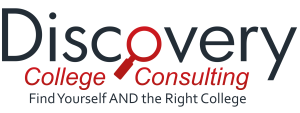 In my recent blog post, “U.S. News College Rankings: How Reliable Are They?”, I explained some of the pitfalls of U.S. News and World Report’s “Best Colleges” rankings. I focused on the fact that a significant portion of each college’s rank is determined by individuals at “peer institutions” — people with a questionable ability to assess other colleges’ academic quality.
In my recent blog post, “U.S. News College Rankings: How Reliable Are They?”, I explained some of the pitfalls of U.S. News and World Report’s “Best Colleges” rankings. I focused on the fact that a significant portion of each college’s rank is determined by individuals at “peer institutions” — people with a questionable ability to assess other colleges’ academic quality.
One of U.S. News‘s shortcomings that I didn’t mention in my previous post is that its rankings put a large emphasis on “inputs”. These are things that a college has or offers, such as financial resources, class sizes, and the percent of faculty with the highest degree in their field. The magazine also considers student characteristics, such as the class ranks and standardized test scores of incoming freshmen. Taken together, these inputs account for 42.5% of a college’s rank. Outcomes, which include colleges’ retention and graduation rates, account for 22.5% of a college’s rank. This is the same amount given to a college’s academic reputation, as determined by the aforementioned peer assessments, as well as by surveys of high school counselors.
So where can high school students and parents find more reliable resources for gathering information about multiple colleges? One option is the National Survey of Student Engagement, or NSSE. Unlike U.S. News, NSSE focuses solely on outcomes, and it doesn’t include peer assessments. Rather, NSSE surveys the people who are most capable of assessing a college’s academic quality – the students! The yearly survey, conducted since 2000, asks students at hundreds of colleges about their “participation in programs and activities that institutions provide for their learning and personal development. The results provide an estimate of how undergraduates spend their time and what they gain from attending college” (NSSE website).
NSSE does this by asking students such questions as, “What skills have you learned in college? How engaging and challenging are your courses? What kinds of relationships do you have with your professors?” NSSE also asks students how they spend their time outside the classroom – something that plays a considerable role in what students take away from their college experience and that U.S. News does not measure at all.
Another option is Washington Monthly. Its rankings focus not on what colleges do for individual students, but what they do for the country as a whole. Since 2005, the magazine has ranked colleges based on three factors, each of which is weighted equally: “social mobility (recruiting and graduating low-income students), research (producing cutting-edge scholarship and PhDs), and service (encouraging students to give something back to their country)” (Washington Monthly website). This methodology makes for interesting results, in which many colleges that are low on U.S. News‘s lists are high on Washington Monthly’s.
It’s important to remember that any set of rankings should be just one source of information in a student’s college search. That being said, if you’re wondering what students can get out of going to a particular college, NSSE arguably is more useful than U.S. News. Similarly, if you’d like to know how different colleges are benefiting our country, Washington Monthly is a great resource.





